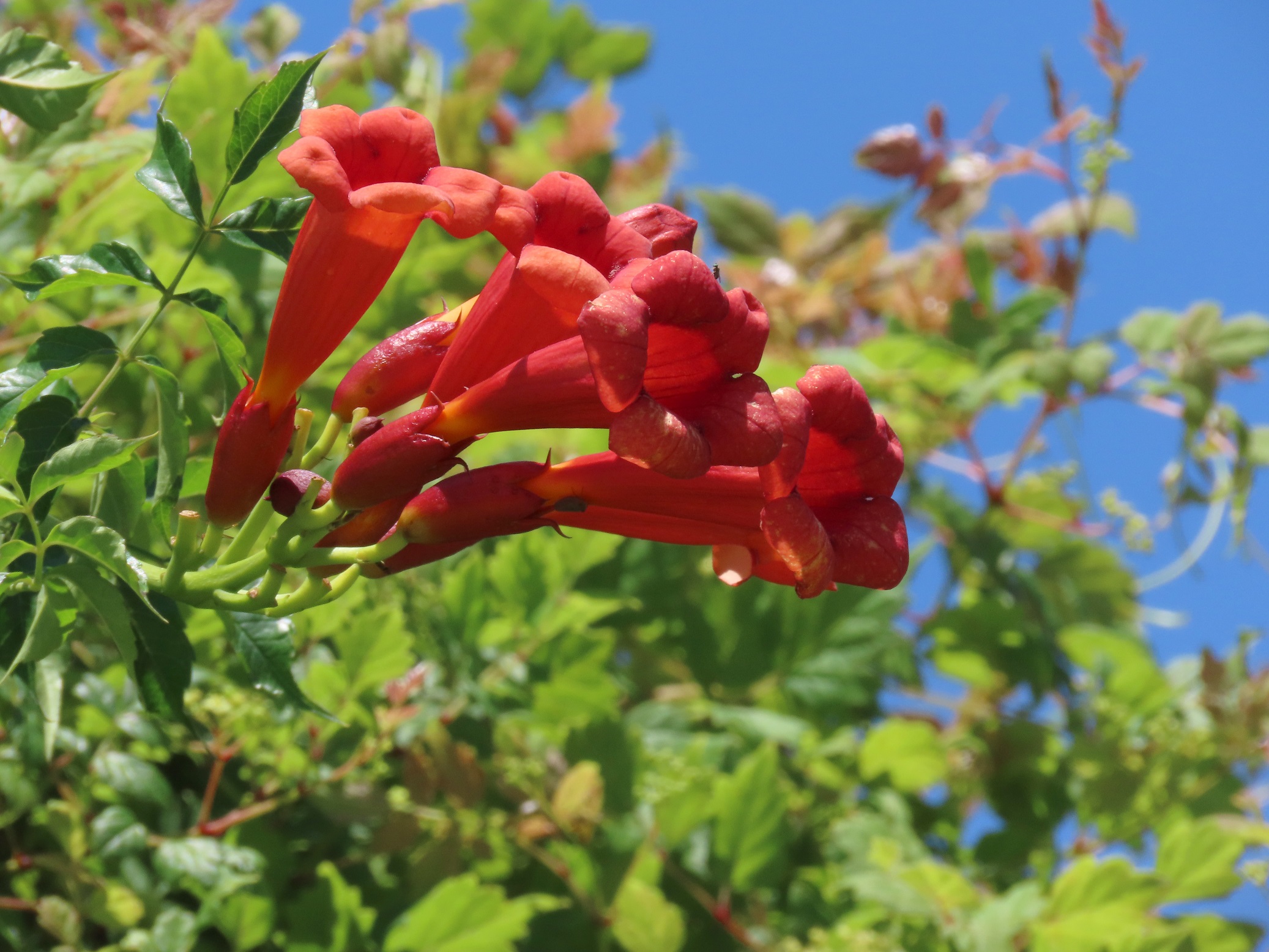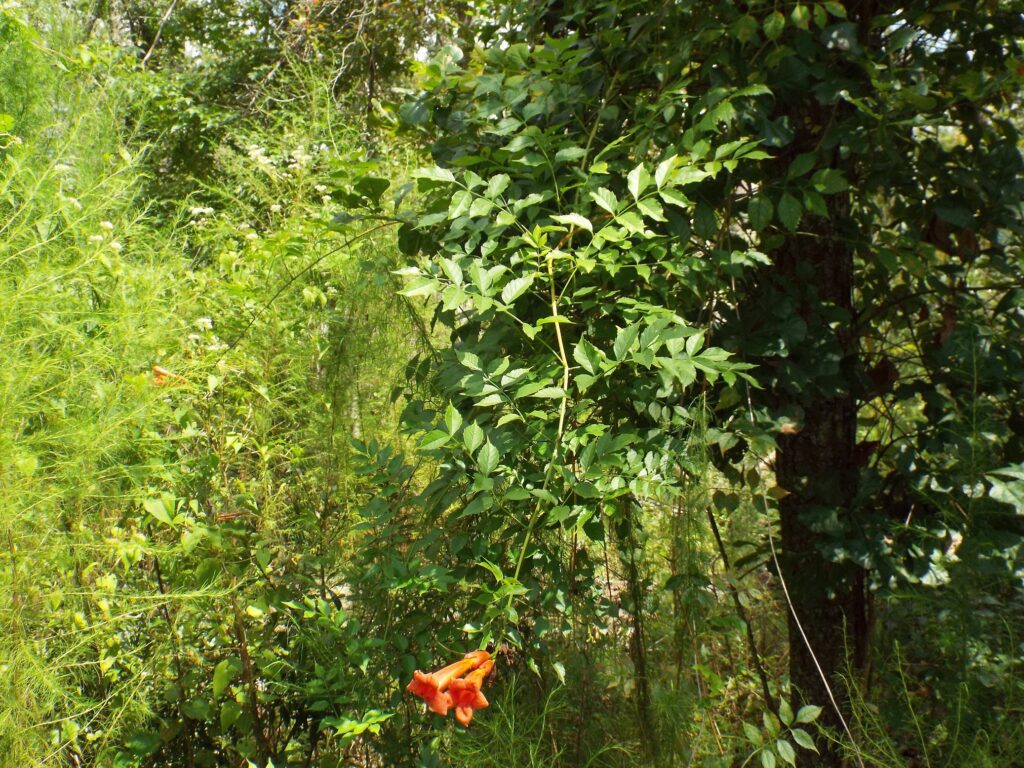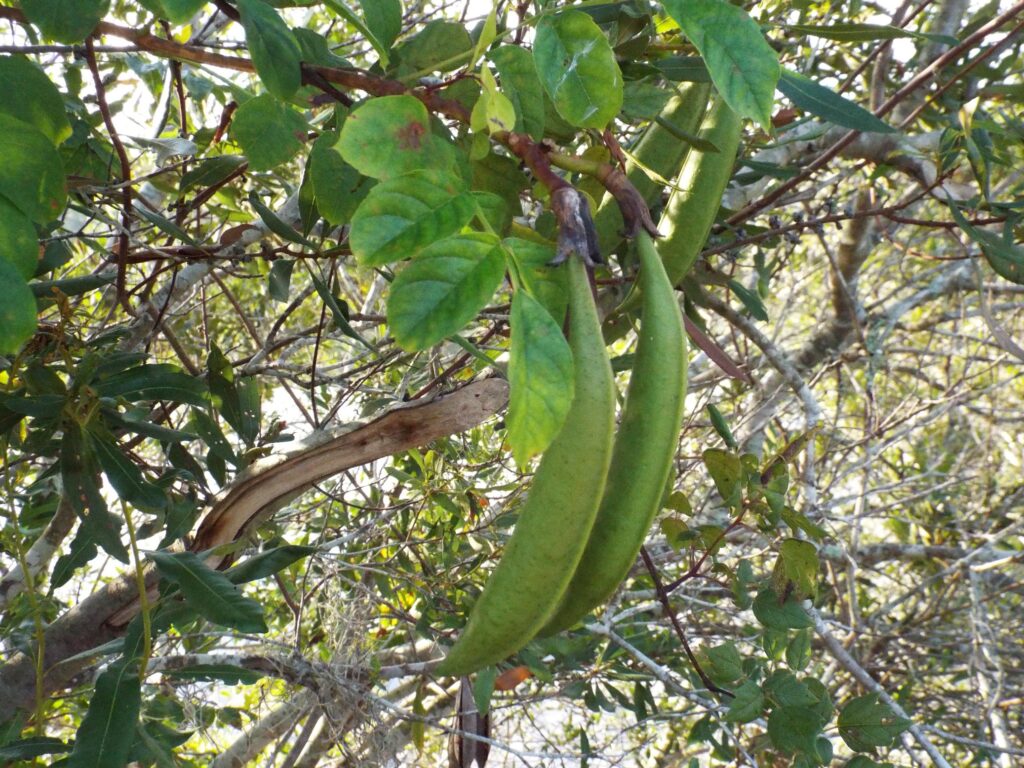



This week for Flora and Fauna Friday it’s the hummingbird’s horn-of-plenty, Trumpet-vine (Campsis radicans).
Trumpet-vine is found throughout the Eastern United States and the plant goes by many names. I prefer Trumpet-vine if for nothing else than the direct simplicity of it: Trumpet vine is a vine with trumpet flowers. Trumpet-vine is one of our several species of aggressive climbing vines. While nowhere near as destructive to trees as our Grapes and Greenbriers, it can give Poison-Ivy and Virginia Creeper a run for their money in the medium-weight division. Like Poison-Ivy, Trumpet-vine climbs with rootlets. These rootlets grow into cracks, crevices, and pores before swelling up and locking the vine in place. This allows Trumpet-vine to grow straight up pine trees and brick walls. As Trumpet-vine ages, its main vine grows with it and can reach several inches in diameter in a few decades. Trumpet-vine bark is pale gray with long vertical ridges and strings. The leaves of Trumpet-vine are opposite, pinnately compound (like an Ash) and a light emerald-green with deeply toothed margins and furrowed veins. When at the top of a small tree or the crook of a limb, their vines often weave themselves into a large mass of stems sheathed in a dense ball of foliage. The real draw of Trumpet-vine, however, is in its flowers.
Trumpet-vine can bloom throughout the growing season but tends to peak in the Lowcountry from May through July. Flowers appear at the end of the stems and are produced in clusters of about 5 to 10 flowers. Each flower is conical in shape with a flared 5-petalled mouth on a finger-sized tube painted in the full gradient of warm colors with a lemon yellow base, orange throat, red mouth, and watermelon lips. Despite the size and flamboyance of their flowers, they can often go unnoticed. Trumpet-vine blooms where it’s actively growing, which is usually at its highest point. So sometimes the lowest flowers on a vine may be 25 feet or higher in the trees where you may not even notice they’re there unless your path crosses with a fallen flower. However, this height and their shape make them an ideal food source for Hummingbirds. Other than bees and a few large butterflies, nothing else can make use of these blooms by day but sphinx, hawk, and hummingbird moths will visit them after dark. By the shape of the blooms, you can tell Trumpet-vine planned on having Hummers over for dinner. Their anthers are positioned just so at the top of the flower to deposit a dollop of pollen on the forehead of any visiting hummer and their funnel shape makes sure they have to bump it. Trumpet-vine and Crossvine have very similar life histories in this regard but Crossvine has a much narrower flowering period that ends right about when Trumpet-vine starts. Throughout spring and early summer, I’d reckon Trumpet-vine is the primary food source of most of our hummingbirds. Seeds are produced from long pods and spread by wind. Trumpet-vine will also spread by its roots if damaged. Trumpet-vine takes well to home gardens too and will gladly smother whatever you plant it beside while it supplies nectar to your local pollinators. It’s best given its own trellis or just allowed to swallow a gazebo or pergola.